In part 1, I looked at the phenomenon of the Great Unconformity, a gap between Grand Canyon layers that spans more than a quarter of Earth’s history. Though geologists understand how unconformities like this occur, creationists have a rather different view about what formed the Great Unconformity.
Steve Austin, the dean of Grand Canyon creationist geologists, writes in the book Grand Canyon: Monument to Catastrophe:
Most creationist geologists regard the Great Unconformity as the feature formed during the tectonic and erosive catastrophe at the onset of Noah’s Flood.
Austin argues that “shallow, fast floodwaters” caused “intense scouring and erosion of the pre-Flood rocks” resulting in a “very conspicuous planar surface of erosion (‘the Great Unconformity’), believed to represent early erosion and the onset of Noah’s Flood.”
In this view, the missing rocks at the Great Unconformity came not from normal geologic processes but from the most catastrophic, most unusual event ever to befall our planet: a universal, worldwide Flood that scoured the entire surface of the Earth. Let’s take a closer look at this remarkable claim.
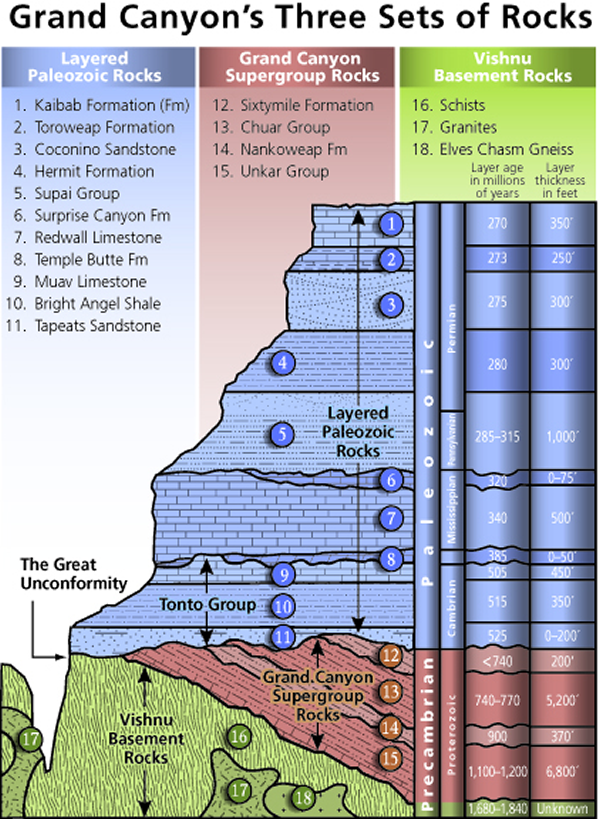
To understand what creationists claim about Grand Canyon during Noah’s Flood, we need to first understand that geologists parse Grand Canyon’s rocks into three main groups:
- the truly ancient metamorphic and igneous basement rocks (example: Vishnu Schist), shown here in green
- the somewhat ancient rocks of the Supergroup (example: Hakatai Shale), shown here in red
- the relatively young, flat, layered rocks of the Paleozoic (example: Tapeats Sandstone), shown here in blue
The basement rocks (green) began as seafloor sediment, which was metamorphosed and crunched and intruded by igneous rocks as a volcanic island arc slammed into the core of what would become North America. (Think of a vast island chain such as Japan colliding with the Asian mainland.)
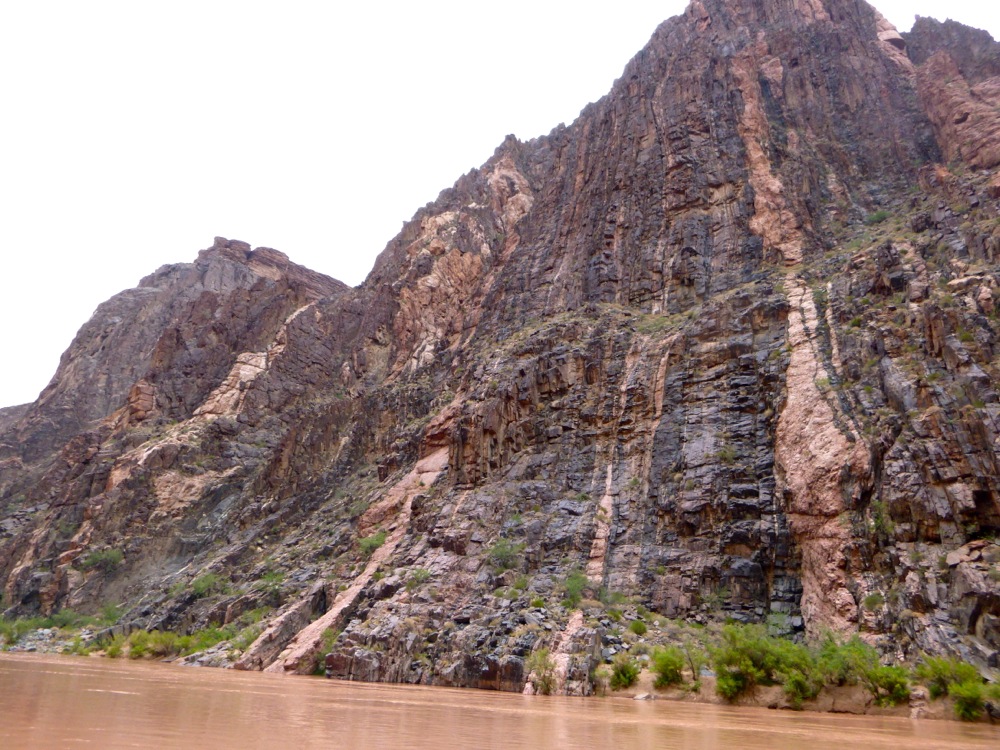
This collision happened a long time ago, when the core of “North” America was in the southern hemisphere; the rocks produced by this event are 1.8–1.7 billion years old. The oldest rock we find anywhere in Grand Canyon—a gneiss from the delightful Elves Chasm (below)—formed as a result of this collision.
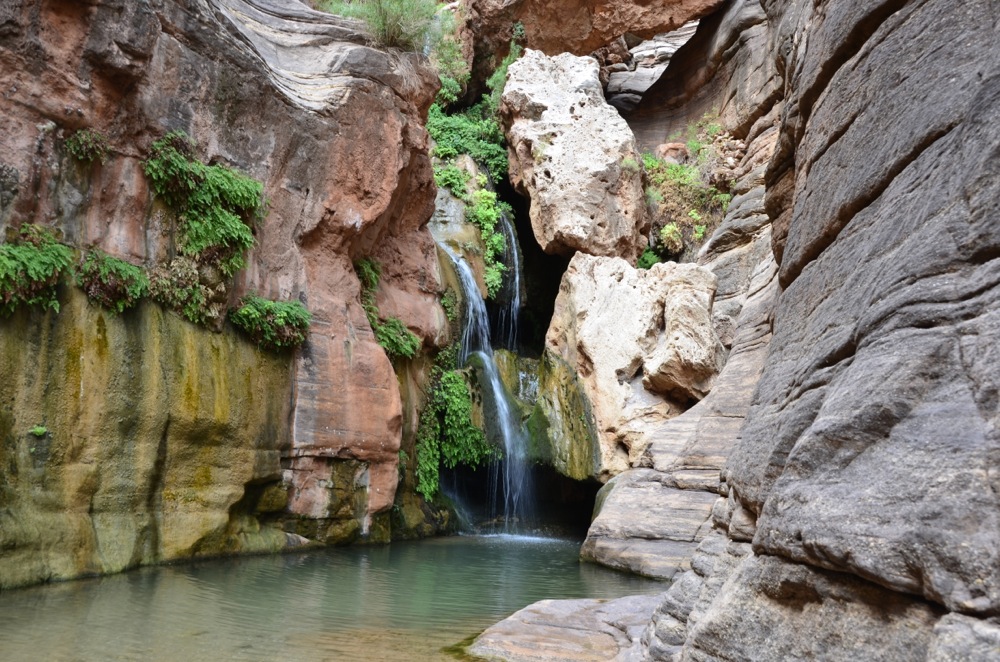
Then comes a large unconformity (though not as vast as the Great Unconformity), followed by the next sequence, the Grand Canyon Supergroup (red). Beginning about 1.2 billion years ago, this Supergroup sequence of rocks formed as mostly flat layers; if you could go back in time, you would see something similar to the currently horizontal Paleozoic rocks of Grand Canyon lying undisturbed. But this calm was not to last—tectonics tilted and twisted the Supergroup rocks so badly that today they are visible in only a few places in Grand Canyon, cowering up narrow defiles as if afraid of being discovered. This formerly thick sequence of flat strata was fragmented, contorted, beaten by time.
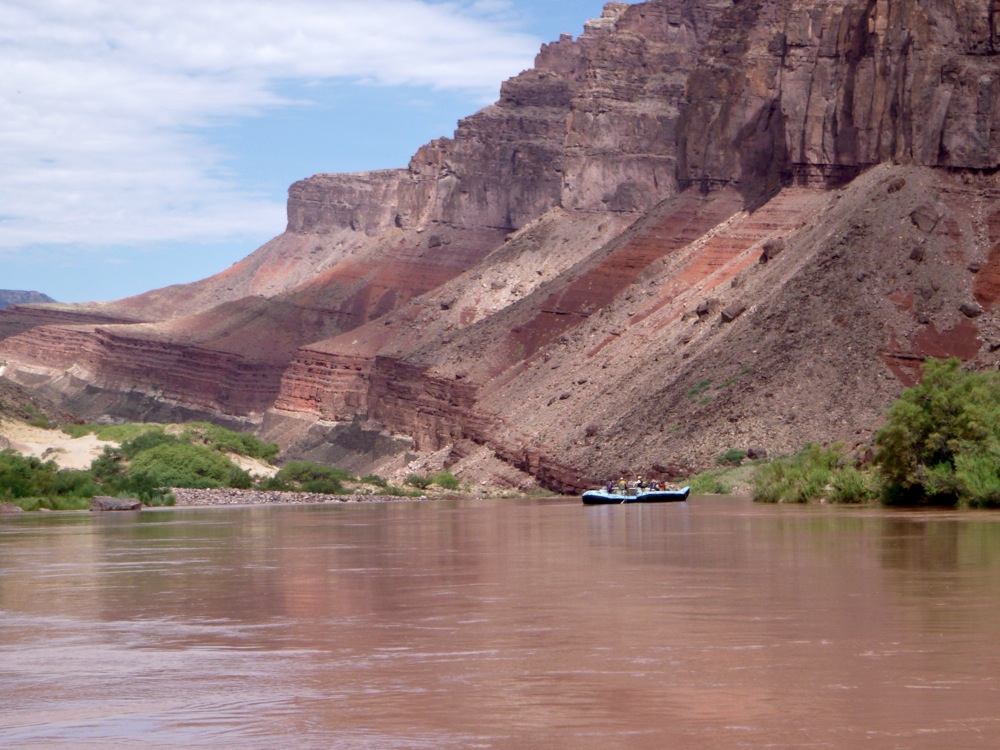
There’s another large unconformity separating these Supergroup rocks from what came next. Beginning a relatively recent half a billion years ago, the layered Paleozoic rocks (blue) were gently set down, starting with the Tapeats Sandstone, following the lead of an encroaching ocean as it spread over eroded Supergroup and Vishnu basement rocks. Where the Tapeats meets the underlying rocks, the Great Unconformity exists.
So that’s the basic story geologists have put together for Grand Canyon. Now let’s turn this on its head and see what the creationists make of it.
For creationists, the basement rocks (green) represent the original rocks created directly by God as described in Genesis. It turns out there are two schools of thought about whether these rocks appeared on Day One or Day Three of Creation Week. Austin writes:
A majority of conservative Christian Hebrew scholars understand that an original rocky earth existed on Day One… God’s command, ‘Let the dry land appear,’ is interpreted as an unveiling of previously created rocks…
However, there is disagreement:
A minority of scholars suggest an alternate view—that it was not until Day Three, when God said, ‘Let the dry land appear,’ that dissolved elements precipitated and combined to form the vast complex of the first minerals and rocks which composed the earliest solid earth.
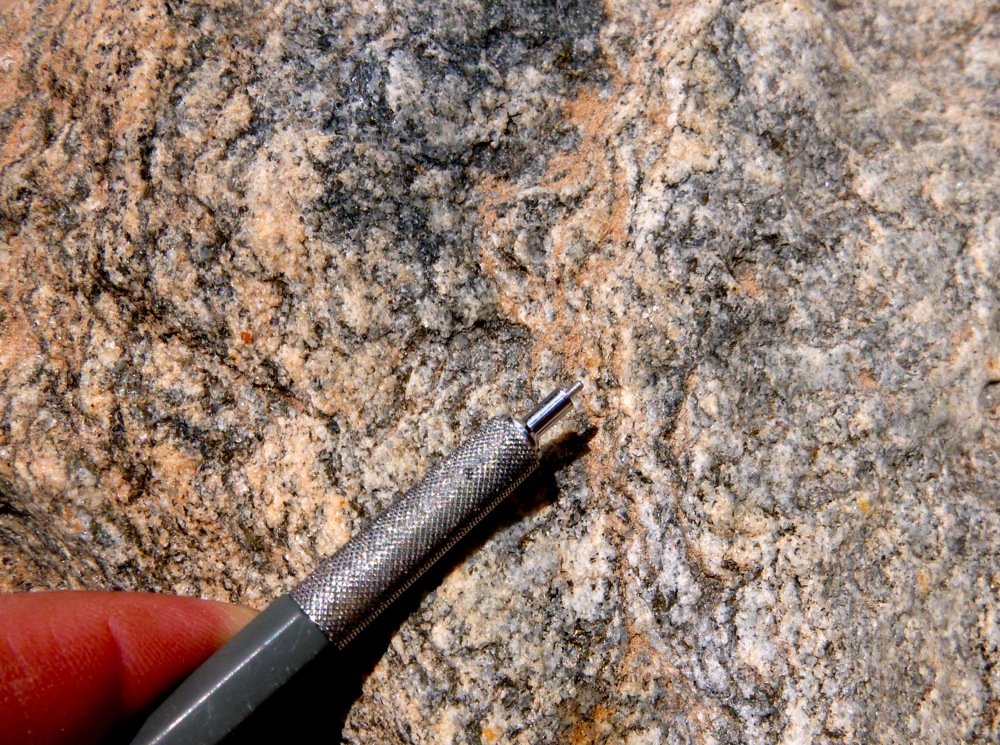
Whatever. Considering that many young earth creationists view the “days” of Genesis as actual 24-hour days, it’s hard to see why two days makes much of a difference. You need more than two days to binge-watch the latest season of Orange is the New Black.
It is also interesting that the phrase “dissolved elements precipitated” is used here, because this sounds a lot like neptunism, a long-discarded eighteenth-century claim that igneous rocks crystallized directly from ocean water rather than cooled from magma.
For geologists, the middle sequence is the Grand Canyon Supergroup (red). For creationists, these rocks:
...represent the sedimentary deposits which occurred late in Creation Week and continued into the pre-Flood period.
In other words, we have Adam and Eve and young Noah walking around on the layers that would become the Grand Canyon Supergroup. It must be quite something for those who think this is true to touch these layers and wonder, “Did Noah stub his toe on this rock?”
Then comes the Flood. It scours the land, in some places clear down to the Vishnu basement rocks. The shattering of the world fractures the Supergroup, tilting it where is not washed away by the deluge. In some places, a few tilted fragments of the Supergroup survive, but in others only the Vishnu basement rocks remain. Then on top of all these eroded units comes a cascade of silt and sand, a torrent of sediment forming flat layers over the eroded surface of the wounded world, a muddy layer cake thousands of feet high. These layers of soft mud are later riven by a deep chasm formed by catastrophic drainage of giant lakes left over from the Flood.
These, then, are two radically different histories for Grand Canyon. One side sees the Great Unconformity as remarkable but normal, the other side sees it as tangible evidence of the onset of Noah’s Flood. On the scientific side, no contortions of logic or gaping omissions of evidence are required; what we see in the rocks fits normal geologic processes, without the need for extraordinary circumstances. On the creationist side, however, the story falls apart as soon as we examine the rocks.
In part 3 we will look at what we would expect to see if a global Flood had occurred and compare that with what we actually find in the rock record. Spoiler alert: the creationist interpretation has a big problem.
